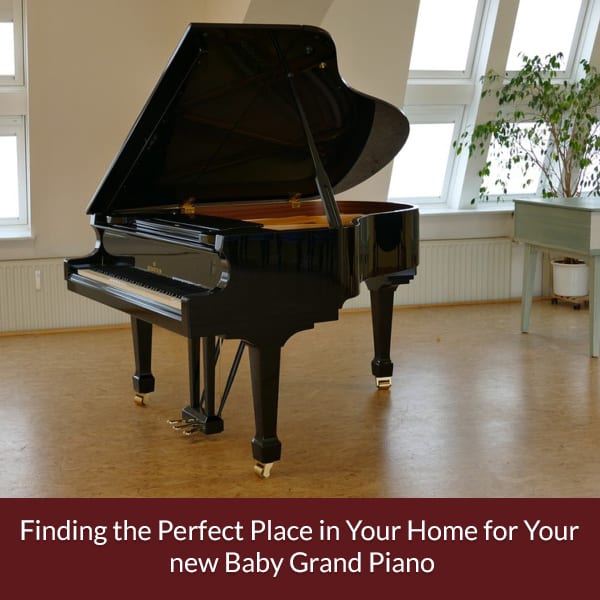 While you may not realize it, your baby grand piano is a temperamental creature. It’s subject to changes in heat and humidity. This is why you want to make sure you display it in an ideal environment – one that isn’t too hot, too cold, too damp or not properly protected to such elements. Doing so causes consistent tuning problems, resulting in undesirable maintenance expenses.
While you may not realize it, your baby grand piano is a temperamental creature. It’s subject to changes in heat and humidity. This is why you want to make sure you display it in an ideal environment – one that isn’t too hot, too cold, too damp or not properly protected to such elements. Doing so causes consistent tuning problems, resulting in undesirable maintenance expenses.
Controlling the Environment for Your Baby Grand Piano
Your home’s temperature, or at least the room in which you plan to house your baby grand, will have a profound effect on the delicate components that this instrument is composed of. This is especially true of high humidity, which will warp the instrument’s soundboard leading its tuning pins and piano strings to rust. You also don’t want to house the instrument in an atmosphere that’s too dry since this can cause the beautiful wood on your baby grand piano to crack. It can also cause its glued joints to start separating. Instead, you’ll want to make sure that the humidity near your instrument is as stable as possible. You can use dehumidifiers or humidifiers and a hygrometer to do this.
Where not to House Your Baby Grand Piano
When you’re wondering where the best place is for your new instrument, simply think about the places where you shouldn’t keep it. These include:
- In direct sunlight
- Where air will blow directly on it
- Next to an unsealed outside walls
- Near a working radiator or fireplace
- Away from cooling and heating vents
- Rooms that aren’t climate controlled
Unfortunately, this does rule out places like sun rooms, enclosed porches, basements, attics, and garages because they suffer from poorly insulated walls or are otherwise unfinished.
Keeping Acoustics in Mind When Decorating the Room
There are a few different factors that will cause variations in the sound your piano emanates when you play it. However, the biggest fac tors are whether it’s in tune and whether the room’s acoustics reflect or absorb the sound.
When your piano is in a small rooms it will sound best if there’s a 1.1-second reverberation time. This means that it takes this long for sound to reflect from the room’s walls, ceilings and floors. The best way to achieve this is by placing your piano in an area that has both hard surfaces (e.g. concrete, hardwood, glass windows, wood paneling) that can reflect sound and soft surfaces (e.g. upholstered furniture, rugs, carpeting, heavy drapes, tapestries) that can absorb sound.
Making Room for Your new Instrument
A baby grand piano takes more care and room than you might think. Make sure you’re prepared. You’ll need at least 5 feet of space from the front of the keyboard to its back. You’ll also need room for its bench, allowing someone to easily maneuver on and off it. You also don’t want your piano any closer than 6 inches to an exterior wall nor do you want a room with a cathedral or vaulted ceiling that extend more than 12 feet high because the sound will disperse. When you’re ready to give a baby grand a home, stop by Dave’s Piano Showroom and we’ll help you find one that’s perfect for your home.
Image Copyright: Nuschka66